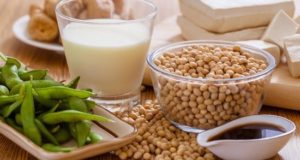
A juicing diet involves the pure liquid content of fruits and vegetables extracted by means of a juice extractor, which is a worthwhile investment given its purpose. Reviews on drinking natural juices to replace other foods are not recommended beyond 5-7 days. However, the American Cancer society approves of some amount of juicing incorporated in a regular balanced diet; the packed nutrients and anti-oxidant benefits may help reduce the risks of developing certain types of cancer.
To give an overview of what the process of juicing entails: it involves a variable speed device that uses grinding or masticating actions to extract the liquid from the juice. The pulp is typically left behind; the juice will contain most of the nutrients, and according to studies, retains approximately 70-90 per cent of its antioxidant benefit in the potent liquid. A juicing diet uses mainly vegetables, fruits and some herbs. Protein plant sources such as nuts and legumes are not usually included.
Pros and Cons of juicing
Juicing helps you harness the natural beneficial properties of plant sources to enhance health and fitness, improve quality of life, and provide a detoxed pure internal environment to protect us against infections.
With that being said a juicing diet has a few drawbacks and is not for everyone. The balance of proteins is usually a concern. This may be bypassed through knowledge of protein contents in fruits and vegetables and the addition of protein powders. Diabetics, individuals with nutritional deficiencies such as kidney disease and persons undergoing chemotherapy will find this type of diet counter-productive. The high sugar content in juices can be extremely high and will interfere with blood sugar levels for diabetics; high potassium can build up in the blood for kidney patients; and for chemotherapy patients the low level of protein and high levels of antioxidants are contraindicated to their therapy.
Now let’s look at a few tips to maximise our use of a juicing diet that can certainly be done every-day, as long as you want with other meals included.
Tips
1: Antioxidants contained in fruits and vegetables are highly reactive (oxidizes quickly) to the environment, as soon as air and liquid come into contact with them. Therefore to benefit fully from plant sources they should be consumed within minutes after juicing for any benefit.
2: Try to buy organic plant sources as much as possible due to the fact that no heat is being applied to fruits and vegetables to remove much of the pesticides and chemicals on their surfaces, as is the state of inorganic plant produce. Because it is more expensive to purchase organic fruits and veggies try cleaning chemicals off inorganic plants using a homemade combination: 1 tablespoon of lemon juice, 2 tablespoons of baking soda, 1 cup of water.
Pour the mixture into a spray-topped bottle. Spray the fruits and vegetables, leave for 5 minutes. Don’t be perturbed if the mixture appears frothy as this is the chemical nature of baking soda. Rinse well.
3: When preparing to juice your fruits and veggies try to get them into smaller sizes instead of attempting to feed them in, in their original form. Use a knife to cut each vegetable and fruit into smaller chunks so that it fits easily down the chute.
4: Try adding essential fats for more nutritional benefit. You can get your added fatty acid from fish oil sources (example cod), and flaxseed oil, sesame seed oil and coconut oil. You don’t need to add much, a table spoon is all that would be required to boost the unsaturated fat content in your juice. Vegetables especially require natural oils to be utilized properly in the diet; it is also a balanced way to get a total meal in one juice.
5: Some fruits and vegetables contain protein; therefore you are not left totally depleted of proteins. Knowledge of which foods contain them and in higher percentage amounts will present a challenge. Below is a list of eight foods with protein percentages per calorie, taken from the US Department of Agriculture.
• Spinach, 49%
• Lettuce, 35%
• Broccoli, 45%
• Cabbage, 22%
• Lemons, 16%
• Oranges, 16%
• Grapes, 8%
• Watermelon, 8%
These 6 delightful recipes can be added to your juicing diet recipes.
Recipes: Fruit-Vegetable-Herb Cocktails
A: Carrot, Strawberry Juice, and Pineapple Supreme
1 cup strawberries, halved, hulled
¼ pineapple, cubed, remove some of the rind
5 carrots, sliced, tops removed
Push through extractor in the order listed and serve immediately
B: Cucumber Teaser
4 large cucumbers cut lengthwise
4 pears, cored and quartered
1-inch piece ginger root
1 large bunch parsley
Push parsley first then rest of ingredients, stir; serve.
C: Mango Dream
5 large mangos, cut lengthwise, remove from seed
4 oranges, rind and seeds remove, cut in pieces
2 inch piece of ginger root
Push through in the same order listed, mix; serve over crushed ice.
D: Detox Fitness
1 medium watermelon with rind, cubed
2 grapefruits, peeled, quartered
8 kiwis, skin removed
2 limes, peeled and quartered
1 lemon, peeled and quartered
Push through in same order, stir well, and serve.
E: Juice Medley
1 apple, cored and quartered
12 cherries pitted
1 cup spinach
1 large cucumber
½ papaya, cubed
2 large carrots; cut lengthwise
2 cloves garlic
½ inch ginger root
1 tablespoon coconut oil
Push through all the ingredients, smaller items combined with bigger ones, mix well with coconut oil; serve.
F: Rejuvenating Swirl
1 cup purple grapes with seeds
1 cup green grapes with seeds
1 medium tomato, quartered
2 medium zucchini, sliced
½ cup cantaloupe, cubed, rind removed
¼ of a large coconut, removed from shell, cut lengthwise in small pieces
Push through all ingredients, stir well and serve.
Juicing has significant health benefits including very fast delivery of nutrients to the bloodstream and requires only a small amount of digestion, allowing the digestive system to take a break, and aiding individuals with gastrointestinal diseases and oesophageal disorders. It is still not superior to blending and pureeing which retains all matter pertaining to the plant source providing 100 per cent nutrients. Therefore mix it up a bit, according to your mood and always be mindful of the balance of nutrients in each juice or smoothie.

 Vitamin Agent The Health & Naturalistic Source
Vitamin Agent The Health & Naturalistic Source





